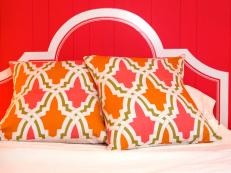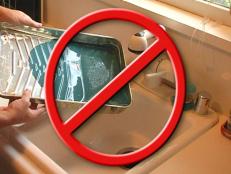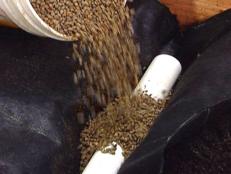Paint Glossary: All About Paint, Color and Tools
Learn what type of paint to use, which tools will work best and the basics for picking color schemes.
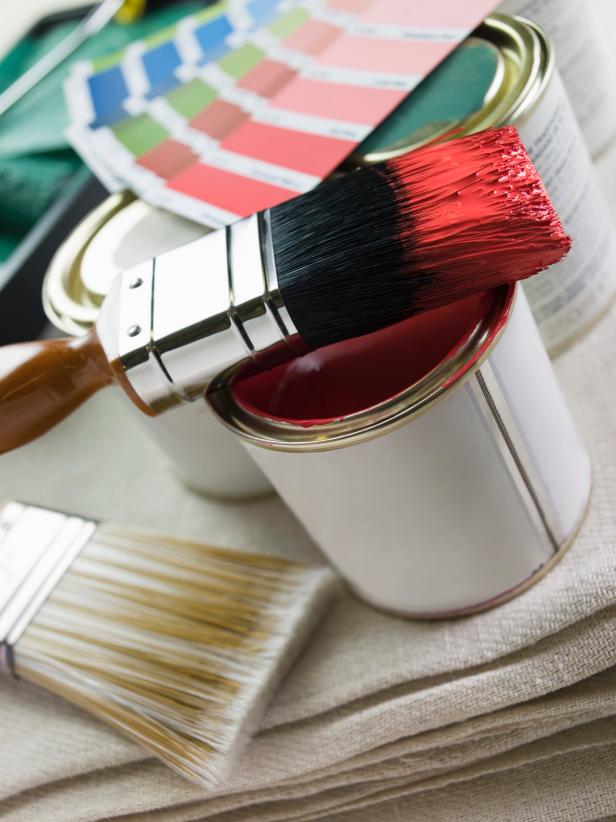
All About Paint
Latex Paint: Often called "acrylic latex" because it contains a plastic resin made of acrylics or polyvinyls to help it adhere better (see Water-Based Paint).
Oil-Based Paint: Commonly used on molding, cabinets and furniture. It provides a protective coating and creates a smoother finish than water-based paint.
To tell whether your current wall color is water- or oil-based, douse a white cloth with rubbing alcohol and rub it on the wall (in an out-of-the-way spot). If the paint softens and begins to transfer onto the cloth, it is water based. If the alcohol does not remove any color, it is oil-based.
Primer: Used to seal bare surfaces and provide a base for paint to grab on to. If you've spackled your walls, priming is a must to prevent the spackle from bleeding through the paint. Use water-based primer on new drywall, previously painted walls (including those that have been patched, repaired or stained), galvanized metal and nonferrous metals. Use oil-based primer on severely stained or damaged walls, on paneling, under wallpaper, and on wrought iron, ferrous metal and raw wood.
Sheen: A paint's sheen gives it a certain finish and quality. There are several options:
Matte/Flat -- Smooth finish, has little or no sheen. Helps hide surface imperfections but may suffer damage more easily than other finishes. Best for low-traffic areas.
Eggshell -- Velvety sheen, easy to clean. This is a great middle-of-the-road option between flat and high gloss. It gives a flatter look than glossy paint but still provides a hard-wearing and protective coating.
Satin -- Silky, pearl-like finish, stain-resistant. Creates a protective shell that resists moisture and mildew. Good for kitchens, bathrooms and high-traffic areas.
Semigloss -- Sleek, radiant and high resistance to moisture. Good for cabinets, doors and windows.
High Gloss -- Very durable and easy to clean. Its glass-like finish makes it good for trim and molding.
Water-Based Paint: (Latex paint is often called water-based) Commonly used on walls and ceilings, it is less toxic and easier to clean up than oil-based paints. Water-based paint comes in a variety of sheens including matte, eggshell or high-gloss.
Water-based paint works well on surfaces previously painted with latex or flat oil-based paints. It usually doesn’t adhere well to high-gloss finishes, however, and cannot be used on bare steel because it will rust it. Water-based paint can be used on top of wallpaper, but there is a risk that the water in the paint may cause the paper to peel away from the wall.
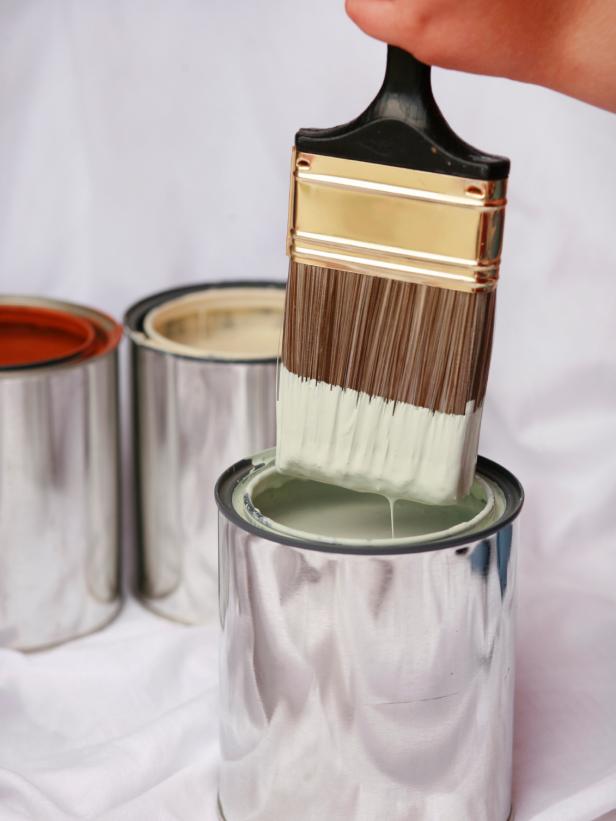
Color Basics
Color Wheel: A pie-shaped diagram showing the range and relationship of colors (Image 1).
Complementary Colors: Hues directly opposite each other on the color wheel. For example, green paired with red or orange paired with blue, like this pale blue dining room accompanied by bold orange accents. As the strongest contrasts, complements tend to intensify each other (Image 2).
Harmonious (Analogous) Colors: Three to six colors close together on the color wheel. The shared underlying color generally gives such color schemes a coherent, sophisticated look. Since little variety of color is used, interest has to come from texture, pattern, lighting and accessorizing. This eclectic living room draws in analogous hues of yellow, orange and hints of red to add interest to the space (Image 3).
Hue: Another term for specific points on the pure, clear range of the color wheel.

Flynnside Out Productions

Suzanna Scott Photography

Immobiliere Le Lion, a member of Luxury Portfolio International
Primary Colors: Red, blue and yellow. All other colors are derived from these three (Image 1).
Monochromatic: Color schemes that are shades and tints of one color (Image 2).
Secondary Colors: A mix of two primary colors. For example, violet is made from mixing blue and red, green is made from yellow and blue, and yellow and red combine to make orange (Image 3).

Jim Tschetter, IC36O Images

Jane Beiles
Triad Colors: Three colors that are equally spaced on the color wheel, such as red, yellow and blue or green, orange and violet (Image 1).
Value/Tone: Degree of lightness or darkness of a color. It is determined by adding black to create a shade, white to create a tint, or gray to create a tone. Monochromatic color schemes are shades and tints of one color (Image 2).
Finding the Right Tools
Paintbrushes – Which type is best? Use a nylon-bristle brush for water-based paint and natural bristles for oil-based paint. Do not use natural bristles with water-based paint, the water can make the bristles limp. Foam brushes are good for intricate work such as painting molding or window casings. These brushes usually last for only one use because they're hard to clean and easy to tear (Image 1).
Paintbrush Shape:
Angled-Sash Paintbrush -- The bristles are cut at an angle to make it easier to cut into corners and paint moldings.
Straight-End Paintbrush -- Straight-end brushes' bristles are cut at the same length (Image 2).
Types of Bristles: The best brushes have bristles that are flagged and tipped. Flagged bristles are slightly split, so they’ll hold more paint and spread it more smoothly. Tipped bristles are slightly tapered to help release an even, controllable amount of paint.
Cleaning Paintbrushes: Use soap and water to clean latex paint off the brush immediately after painting. If the paint dries on the brush, you'll need special solvents to remove it. If your house is on a public sewer system, you can clean the brushes in your sink, but be careful not to dispose of paint in an area where it might seep into the groundwater.
For oil-based paints, you'll need a solvent such as paint thinner or mineral spirits. Pour about two inches of thinner into a metal container and swirl the dirty brush in it until the paint comes off. Press the brush against the side of the container to remove excess thinner and clean off the remaining thinner with a rag, then rinse with soap and water. If oil-based paint dries on your brush, just soak it in thinner for a few minutes before cleaning. Caution: Rags, steel wool, sanding dust or waste soaked with oil-based products may spontaneously catch fire if improperly discarded. Immediately after each use, place rags, steel wool, sanding dust or waste in a sealed, water-filled metal container.
Moist paintbrushes can be wrapped in plastic or waxed paper and sealed with a rubber band or aluminum foil. Hang brushes upside down to maintain their shape (Image 3).


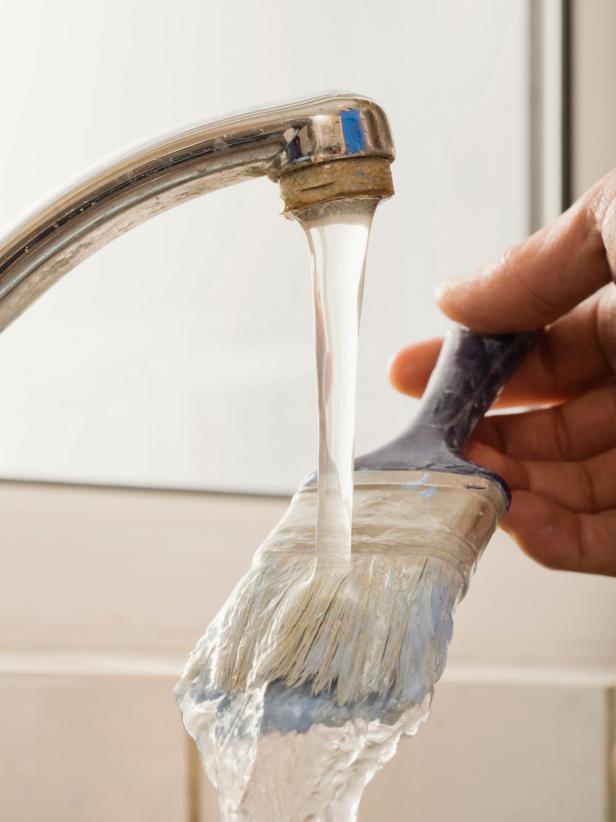
Painting Pads: These can be very useful for cutting around trim. The pads come with small wheels that allow you to paint up to the edge of the trim without getting paint on the trim. To use one, dip the pad face into the paint, being careful not to get paint on the rollers.
Paint Sprayers: There is a wide selection of sprayers available, ranging in size, capabilities and price. No matter which type you use, always wear a dust mask or respirator to protect yourself from fumes (Image 1).
Hand-held airless paint sprayers -- best for staining and for outdoor work, such as painting a fence or sealing a deck. Use only oil-based paint or stain unless it is rated at 45 watts or more.
Airless spray paint roller -- works like a paint roller, without the inconvenience of having to continuously refill your paint tray as you work.
High-volume low-pressure sprayer -- designed for professional finishing jobs, where the control of the spray is important. Good for painting interior walls, exterior jobs and crown or dentil molding. They come with various nozzles that can be used to create special designs. Can use oil- or latex-based paint.
High-pressure, low-volume sprayer -- this sprayer is gravity fed and works with a compressor. It has the capacity to spray a wide variety of finishes, but can overspray and splash back at times.
Diaphragm paint sprayer -- works with a five-gallon bucket to provide a continuous supply of paint.
Paint-Sprayer Cleanup: After using latex paint, run water through the sprayer until it's clear. After using oil-based paint, pour paint thinner into the sprayer. It's important to clean the sprayer and nozzles thoroughly because any leftover paint can ruin the machine.
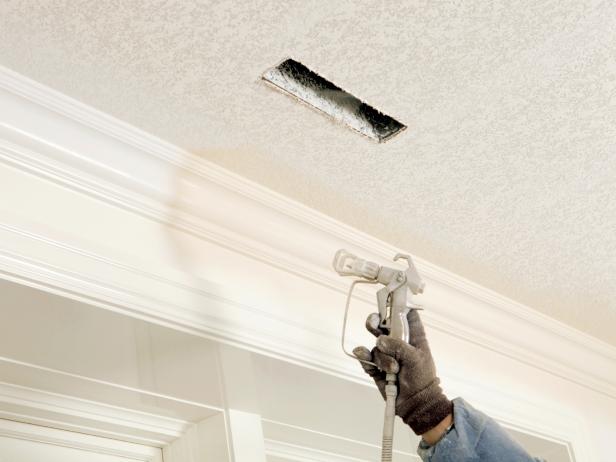
Roller Covers: Paint rollers are great time savers on any paint project. Using the correct roller cover can make your painting a whole lot smoother.
Nap -- The correct nap length of roller cover all depends on the texture of the surface you are painting. For a rough surface, use a roller with a long nap length. For smooth surfaces, use a shorter nap length. For example, on concrete block or stucco use a roller cover with a 3/4" to 1" nap. A 3/8" or 1/2” nap will probably work for most interior wall surfaces and with various sheen levels. A 1/4” nap is too flat and hard for most wall applications (Image 1).
Fiber -- Mohair is good for applying enamel paint. Lambswool covers are excellent for alkyd paints, but not for latex. Synthetic fibers are the most versatile but cannot be used with epoxies and polyurethane (Image 2).
Core -- Cardboard cores are not very durable because they absorb the paint, get soft and often lose their shape. Also, cardboard and many other types of roller covers use glue to hold the fabric to the core. The problem here is that the solvents in paint can cause the glue to dissolve, making the roller fall apart (Image 3).
When selecting a roller frame, look for expandable poles made from heavy-gauge wire, and make sure it has end bearings for smooth operation.
Cleaning Roller Covers:
For latex paint, scrape as much paint off the roller as possible. Partially fill a sink or large bucket with warm water and roll the applicator back and forth. If necessary, use detergent with the water to remove difficult paint. Rinse the roller until the water is clear. Let dry.
For oil-based paint, scrape as much paint as possible off the roller. Roll the applicator in a paint tray containing mineral spirits or paint thinner then wash the roller in soapy water. Rinse thoroughly and let dry.
Store roller covers in clean plastic bags.

















